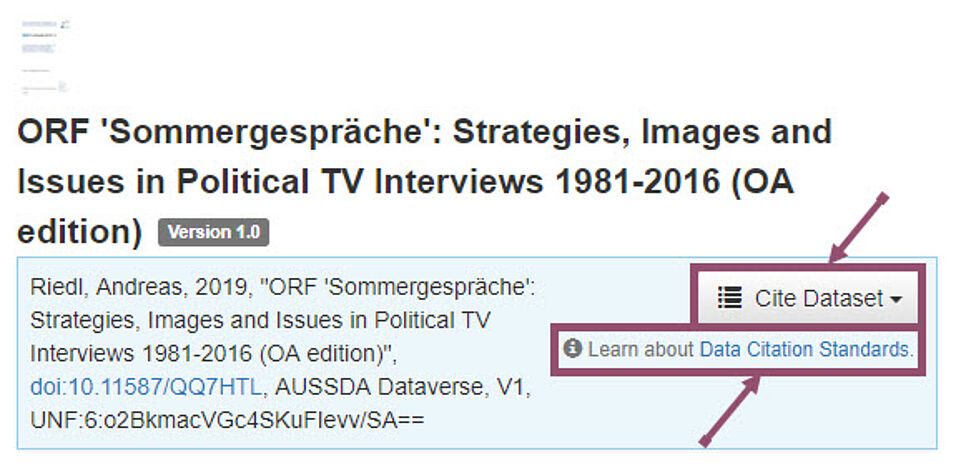Research data shared with others is often at the end of a research cycle. After the application's submission and approval, long preparatory work and data collection, researchers take the time to prepare their data for re-use by others. They make their data available via the AUSSDA Dataverse. Other researchers can download the data and use them to answer their questions.
Intellectual property and good scientific practice
Compared to other scientific works such as articles, dissertations or book contributions, research data are not (always) protected by copyright. In general, there is no ownership and no copyright protection for data and the information they contain. The content itself can never be protected, only its representation provided it constitutes a "personal intellectual creation" [persönliche geistige Schöpfung] (Kuschel, 2018). However, related intellectual property rights can also apply (e.g. database protection) if this level of creation is not reached. As a result, the question of ownership of rights in research data sets is not easy to answer.
Data have become an important part of scientific work and are basis of scientific results. As such, they need to be quoted correctly when used in e.g. an article, blog post or book in order to adhere to good scientific practice. Data management is becoming increasingly popular; the publication and correct citation of data are now regarded as principles of good scientific practice in order to create transparency and verifiability in research. This starts with the recognition of data as legitimate, citable scientific products (ALLEA, 2017, p. 6).
In practice, however, neither this view nor a uniform standard has been fully accepted.
"Data are sometimes listed in the bibliography, sometimes in the text, sometimes not at all, and rarely with enough information to guarantee future access to the identical data set" (Altman & King 2017).
In the Joint Declaration of Data Citation Principles of the organization Force11 (The Future of Research Communications and e-Scholarship), eight principles for the citation of data were elaborated in 2014. Citing data is as important as citing publications to acknowledge scientific achievement and legal attribution. Persistent, unique identifiers make it easy to cite data in scientific literature.
Data in the AUSSDA Dataverse
The AUSSDA Dataverse makes it very easy to prove the correct citation of data. On the Dataverse homepage you can see the dataset title, its citation and the abstract at firstglance. On the respective subpages of the datasets you can also export other citation styles. With the help of metadata, citations can also be extended as required. The citation of data should contain the following things:
- Author(s)
- Year
- Title of the data record
- Persistent Identifier (PID)
- Name of the repository or archive
- version number
Here are some examples from the AUSSDA Dataverse
References
ALLEA (2017): The European Code of Conduct for Research Integrity. Revised Edition. Berlin
Altman, M., & King, G. (2007). A proposed standard for the scholarly citation of quantitative data. D-lib Magazine, 13(3/4)
Kuschel, L. (12.09.2018): Wem "gehören" Forschungsdaten? In: Forschung & Lehre 8/19: Forschungsdatenmanagement, www.forschung-und-lehre.de/wem-gehoeren-forschungsdaten-1013/ [04.06.2019]
Data sharing increases and data citation evolves - Altman, M., & Crosas, M. (2013). The Evolution of Data Citation: From Principles to Implementation. IAssist quarterly, 37.


